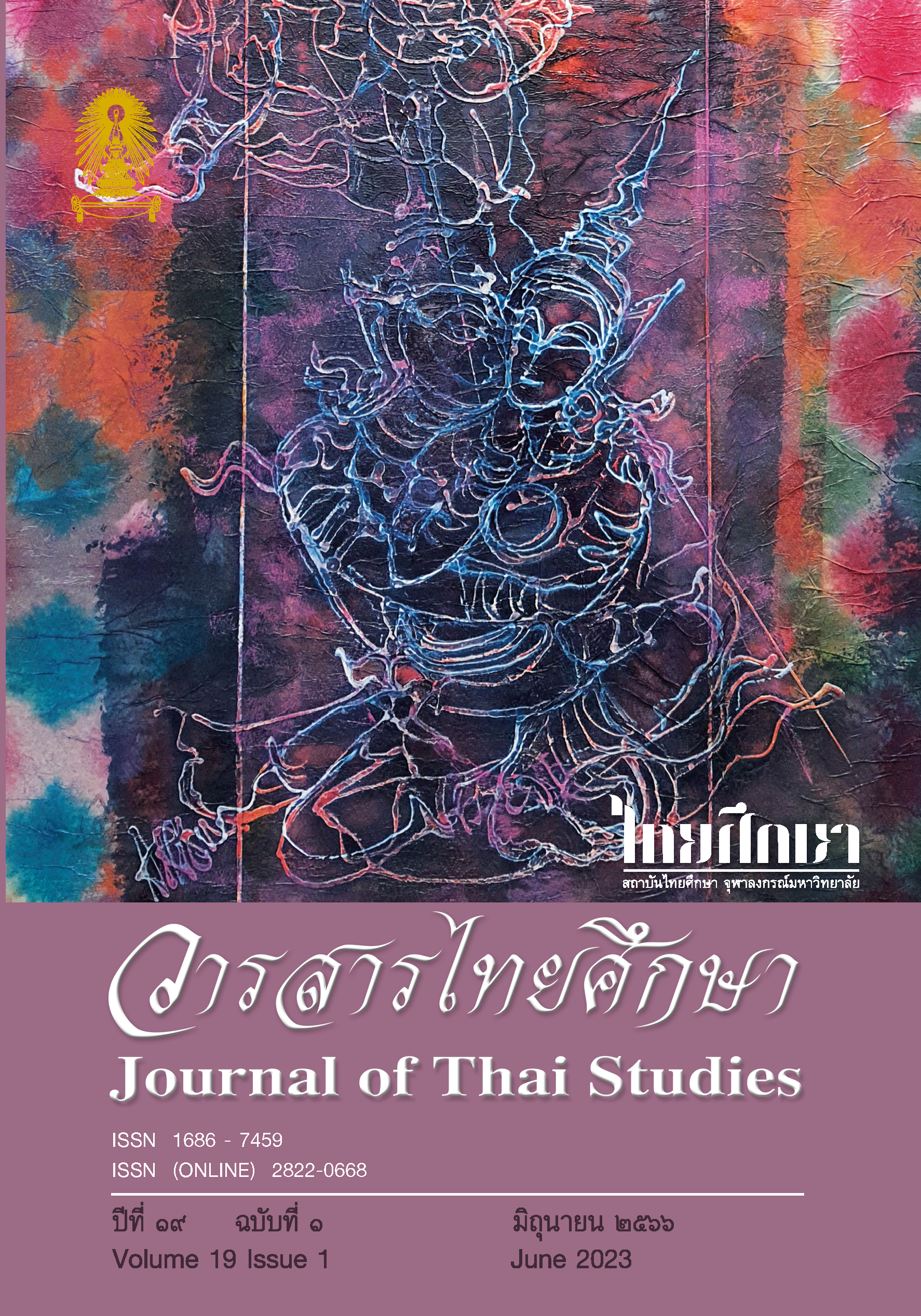The Legend of Muay Thai: 9 Satra : Intertextuality from Ramakien and Implications of the Film’s Construction in Contemporary Thai Society
Main Article Content
Abstract
The research for this article aimed to study the Thai animated film ‘The Legend of Muay Thai: 9 Satra’, directed by Nat Yoswatananont and released in 2018, under two main objectives. The first objective was to study the intertextuality of Ramakien, a Thai rendition of Ramayana, in this film; secondly, the implication of that intertextuality of Ramakien constructed in this film was examined along with the Thai contemporary context during the 2010s. The results of the research are that there are four types of intertextuality from Ramakien in this film. Firstly, the characteristics and roles of the main characters from Ramakien, Thotsakan, Phiphek and Hanuman, remained. Secondly, these characters were transformed in many ways. The setting of Ayodhya, or Rama’s city, as well as the battle of good, evil and delusion, were adapted to serve as a new theme of unity. Thirdly, the film added new characters, Ot and Siao-lan, along with a new feature, Muay Thai, to present Thainess. Lastly, key aspects, such as Phra Ram and the delusional nature of Thotsakan in women, are omitted in this film to emphasise social unity rather than war. These findings link to two main contexts during the 2010s in Thai society. First and foremost, this film resonated with the political conflict and polarization in Thai society. Rather than focusing on the battle of the opposing sides, the main theme of this story aimed to call for unity and concluded with friendship. Finally, The Legend of Muay Thai: 9 Satra depicted the impact of globalization that challenges Thainess. On the one hand, this film might be seen as a consequence of the anti-globalization movement insofar as the film returned Thainess to the screen. On the other hand, the film shows the status of Thainess that has to be hybridized with international cultures and media.
Downloads
Article Details

This work is licensed under a Creative Commons Attribution-NonCommercial-NoDerivatives 4.0 International License.
Journal of Thai studies is licensed under a Creative Commons Attribution-Noncommercial-NoDerivatives4.0 Intenational (CC BY-NC-ND 4.0) licence, unless otherwise stated. Plese read our Policies page for more information on Open Access, copyright and permissions.
References
Maklai, K. et al. (2021). The Creation Myths and Making History Though the Animation movies (Krut: the Himmaphan warriors) in Contemporary Thai Society Context. in The 14 th Research Administation Network Conference. Bangkok: Strategic Wisdom and Research Institute, Srinakharinwirot University.
Mongkol, C. (2017). A Comparative Study of Dasakantha in various versions of the Ramakien. (Master thesis). Silpakorn University,
Bangkok, Thailand.
Pantoomakomol, S. (1994). The Intertextuality of the Fabulous Thai Country Songs During 1955-1992. (Master’s thesis).
Chulalongkorn University, Bangkok, Thailand.
Poolthupya, S. (2006). The Influence of the Ramayana on Thai Culture: Kingship, Literature, Fine Arts and Performing Arts. The Journal of the Royal Institute of Thailand, 31 (1): pp. 269-277.
Prachakul, N. (2009). Yok akson yon khwamkhit lem 2 wa duai sangkhomsat lae manutsat [Rethinking Text, Reflecting Thoughts Vol. 2 : On Social Studies and Humanities]. Bangkok: Witphasa Publishing.
Prasannam, N. (2021). Khian duai ngao lao duai saeng: Wannakam kap kan datplaeng sueksa [The Poetics of Lights and Shadows: Literature and Adaptation Studies]. Bangkok: Saengdao Publishing.
Ruengruglikit, C. (2016). The Theme and its’ Roles in Ramakien by King Rama I. Journal of Humanities and Social Sciences. SRU, 8(3),
-30. Retrieved from https://e-journal.sru.ac.th/index.php/ jhsc/article/view/525.
Sajjapun, R. (2003). Namanukromramkiat prawatkhwampenma tualakhon sathanthi phithi awut paiyanyai. [Glossary of Names in Ramakien]Bangkok : Suwiriyasatchut.
Sajjapun, R. (2017). An wannakam Gen Z [Reading Gen Z Literature]. Bangkok: Saengdao Publishing.
Sajjapun, R. (2020). Okat mai nai wannakhadi sueksa [New Opportunities in Literary Studies]. Bangkok: Saengdao Publishing.
Sakolrak, S. (2003). Thai literary transformation: an analytical study of the modernization of Lilit Phra Lor. (Doctoral thesis). SOAS University, London, United Kingdom.
Yoswatananont, N. Cho luek bueanglang kap Nat Yoswatananontphukamkap lae khian bot 9 Sattra [In-depth Interviewing with Nat Yoswatananont, the director and script writer of the exciting Thai animation film‘9 Satra’]. (2018). Retrieved from https://akibatan.com/2018/01/akibatan-interview-with-nat-yoswatananont-9-satra-creator/.


